By Rick VanSickle
The last bottle of Niagara wine made by Marlize Beyers was at Hidden Bench in 2016, so indeed it has been a long way home.
Also in the Niagara Wine Report, a look at four new wines from Dobbin Estate, Stonebridge Vineyard, and Lailey.
But truth be told, Beyers never really left Canada when she made her final vintage at the Beamsville Bench winery, and she definitely never left the wine industry. Beyers’ story is one of inspiration, exploration and acquiring a worldly perspective on wine that has led to her very first wine brand aptly named The Long Way Home. The debut Chardonnay from the project is sourced from a vineyard she knows all too well, Hidden Bench’s Felseck Vineyard.
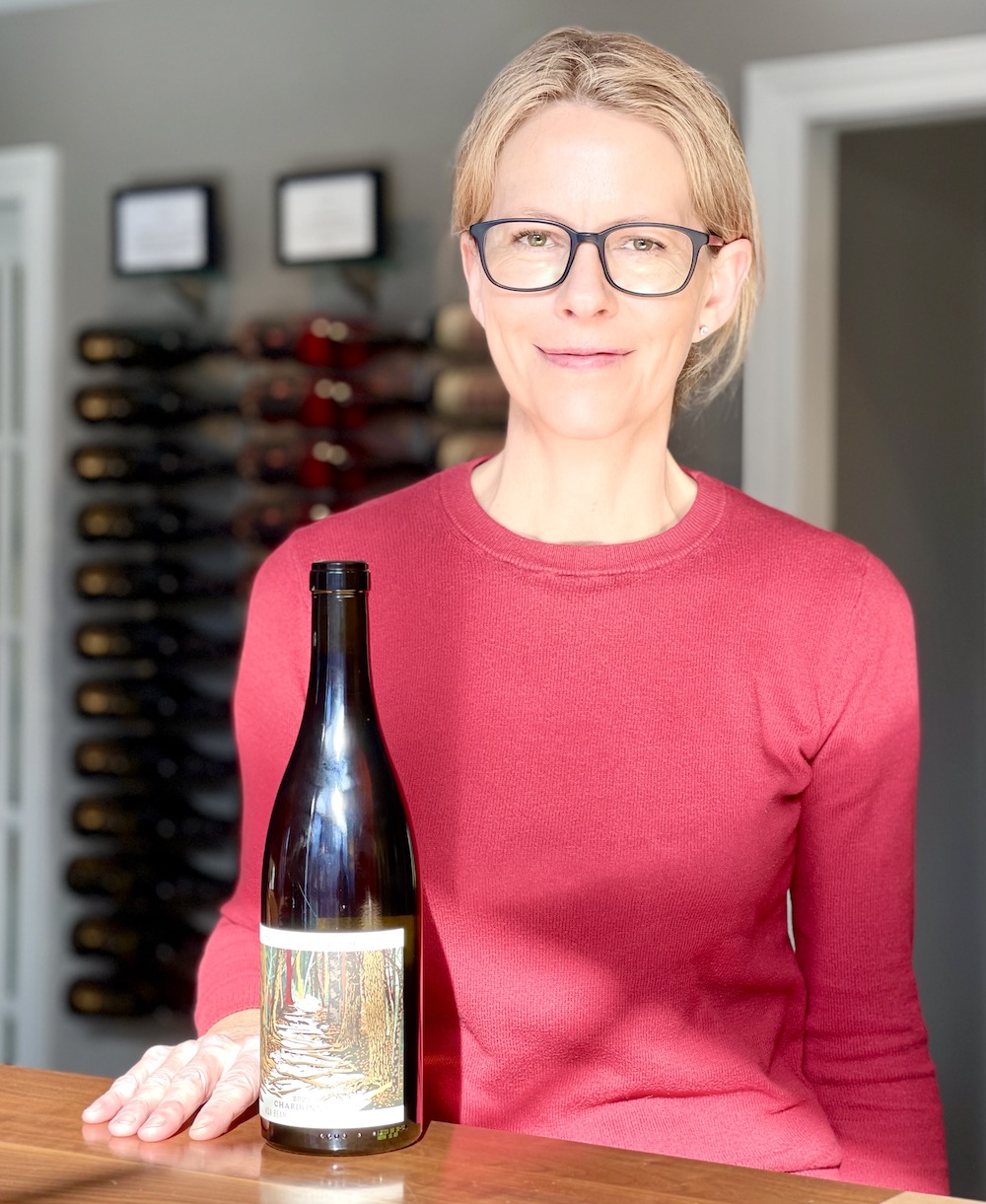
The long and winding wine journey for Beyers, above, began at Stellenbosch University and Elsenburg Agricultural College in South Africa where she learned her craft and launched an accomplished career in winemaking and consulting in 2002.
Beyers is South African by birth and Canadian by circumstance. She moved to Canada when her South African husband came here to work. The family lives in Hamilton with their two children. She divides her professional career between making wine at Bruce Jack Wines and the Drift Estate in South Africa, wine consulting and winemaking in California, Chile and Spain with her wine consulting company, Resolute Wine Works, which she owns with Bruce Jack (both Jack and Beyers pictured below), all while living in Ontario, making her own brand, travelling several months a year to make wine around the world, and juggling family life.
Beyer’s global experience of crafting wine has given her substantial insight into many different climates and viticultural challenges, which she is now applying to her first wine made under her own label in Niagara.
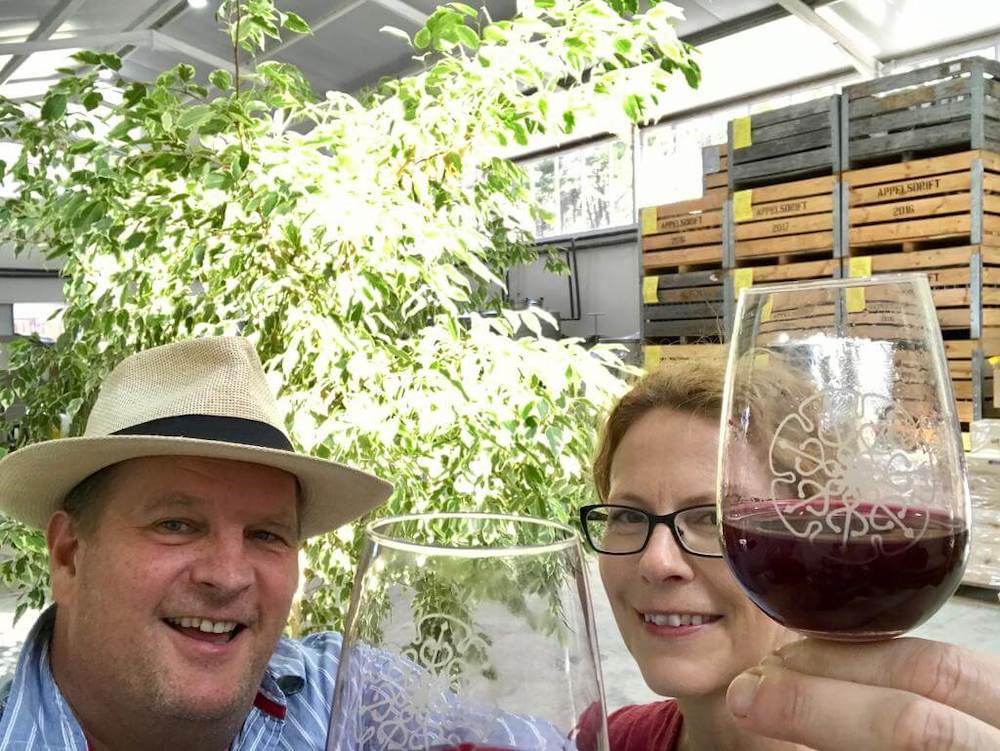
“I believe in authenticity in wine, wines with a sense of place and to guide these wines with little interference to the best they can become,” Beyers said. “This is achieved by paying attention to the smallest detail from vineyard to bottle.”
Beyers was the winemaker at the organic/biodynamic Hidden Bench Estate Winery from 2010 to 2017, and Flat Rock Cellars on the Twenty Mile Bench from 2005 to 2009. She still consults for both wineries.
The Long Way Home is a culmination of all these experiences, a “story of forging pathways and putting down roots, of old bonds and new friendships.” she said. “Drawing on years happily spent unravelling the idiosyncrasies of far-flung vineyards across four continents, it mirrors the flow of a lifelong commitment to wine-craft and celebrates the strength of holding on, and the power of letting go and following your dreams.”
As I sit across from Beyers in the tasting room at the Niagara Custom Crush Studio her new base for The Long Way Home, she beams with pride at the upcoming release of her first wine. Tasting the debut 2022 Chardonnay from Felseck Vineyard, she tells me the project is “all about keeping old bonds and making new ones.”
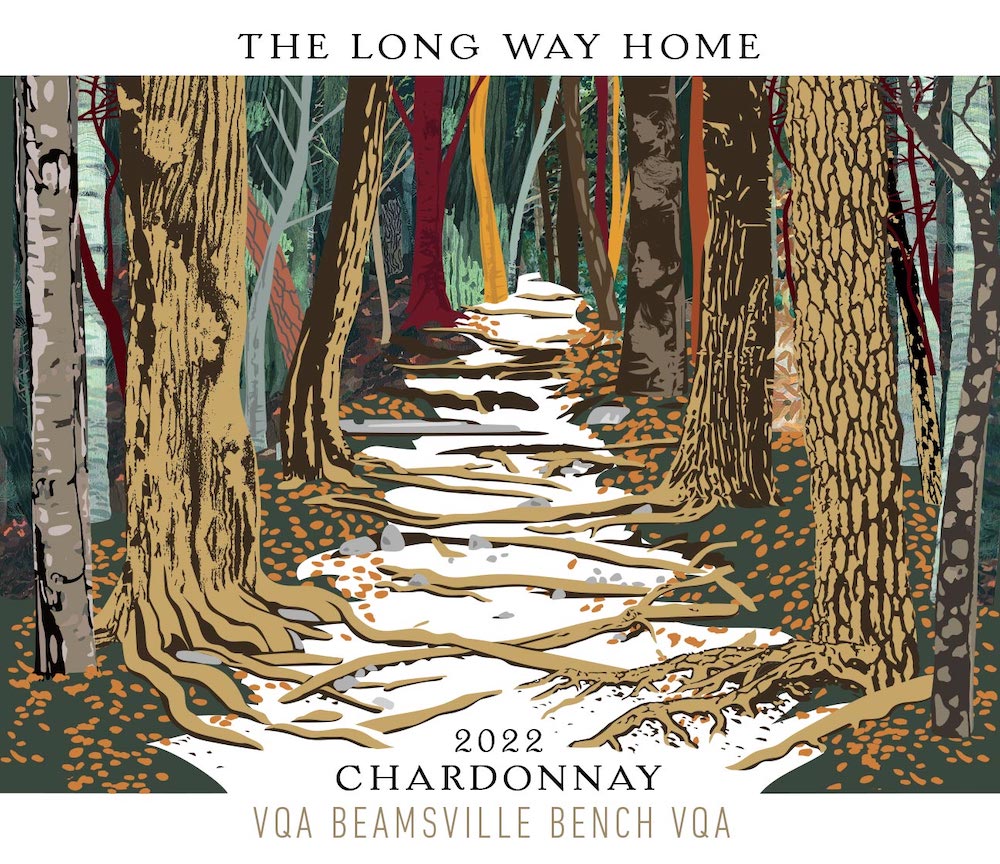
It’s a beautiful wine, a singular expression of Chardonnay from a familiar vineyard to her on the Beamsville Bench that complements what Hidden Bench does with its bottling, rather than mirror it. Her experience working with cool climate grapes from around the world has allowed Beyers to “take that experience and make something I absolutely love to drink.” The wine and how she made it is detailed in the review below.
Beyers’ next wine under her label is already in the works, another Chardonnay, this one from the 2023 vintage from the Beamsville Bench, sourced from Malivoire, but beyond that, she is still pondering what direction to take the brand. Riesling enters the conversation. A smile crosses my face. Yes, please!
The official release of The Long Way Home takes place Nov. 25-26 at the Niagara Custom Crush Studio in Vineland from 12 p.m. to 4 p.m. If you can’t wait, you can order it through Resolute Wine Works here and also get it at both locations of Archives Wine and Spirits in St. Catharines. But you have to act fast, there were only 130 cases of this wine made. “As the year draws to a close, this is the perfect time to stock up on wines for the holidays, gifts for colleagues, teachers and friends or something to enjoy with a great meal or in front of a cosy fire,” said Beyers. “Come join me for a personal tasting, hear the story behind the name and wine and see the captivating label.”
Beyers chooses to stay off social media other than a LinkedIn account, so to stay up to date, you can sign up for her newsletter through the Resolute Wine Works website. There are some other wines coming to Ontario under different labels that Beyers works with and subscribers to the newsletter will be notified when they arrive at the LCBO.
The Chardonnay
What makes it unique?
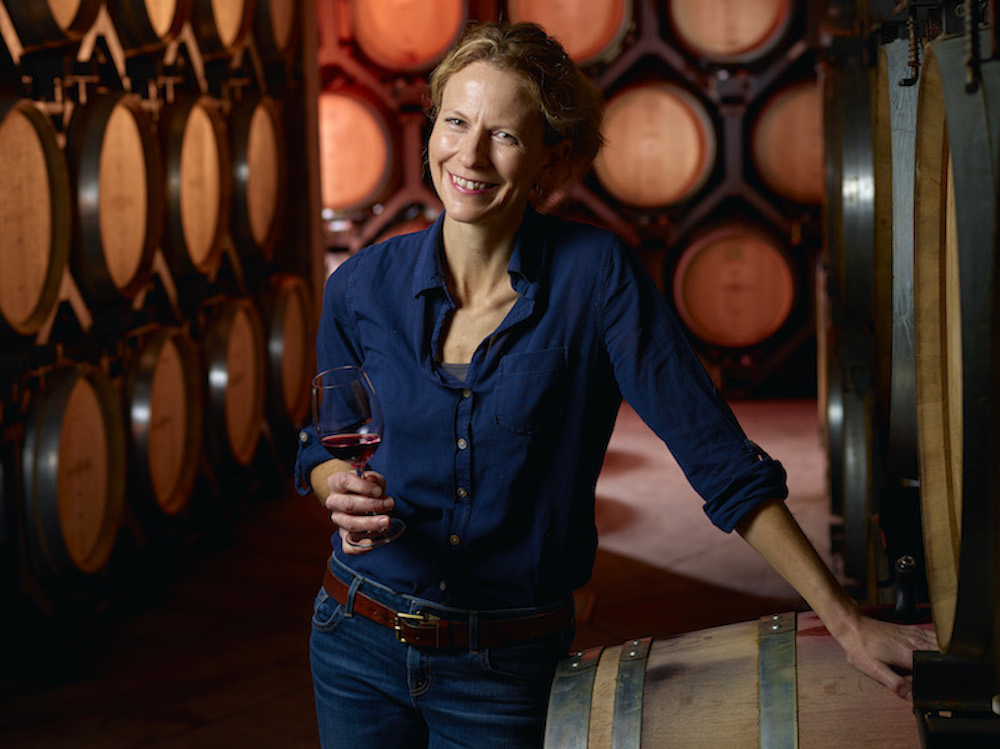
Beyers, above when she was the winemaker at Hidden Bench, wanted to create a Chardonnay from a vineyard she is familiar with — Felseck at Hidden Bench — but make it in her own style. She took her inspiration from working with several vineyards from around the world and applied those experiences to something very familiar to her as the former winemaker there. She fermented 40% of the Chardonnay grapes on the skins, not to make an “orange” wine, but rather to achieve “optimal aromatics from the skins, add structure and longevity.” It was fermented cold to keep the natural colour of Chardonnay with gentle, daily punch downs by hand. 60% of the fruit was whole bunch pressed and the wine was aged for 10 months in French oak, 20% of which was new oak. It was bottled unfined and unfiltered.
Why Chardonnay?
“Chardonnay is grown in many regions around the world due to its versatility in style and adaptability to various climates, but its true character can only shine in the right terroir,” said Beyers. “The Beamsville Bench sub-appellation is one of those, with the soils a mix of gravel, sand, silt, and clay layered in dolomitic limestone, the result of continuous erosion of the Niagara Escarpment and years of glacial activity. In the cool climate of the Bench, Chardonnay’s potential for greatness shows, resulting in elegant wines with fresh natural acidity and intense aromatic expression.”
The story behind the label
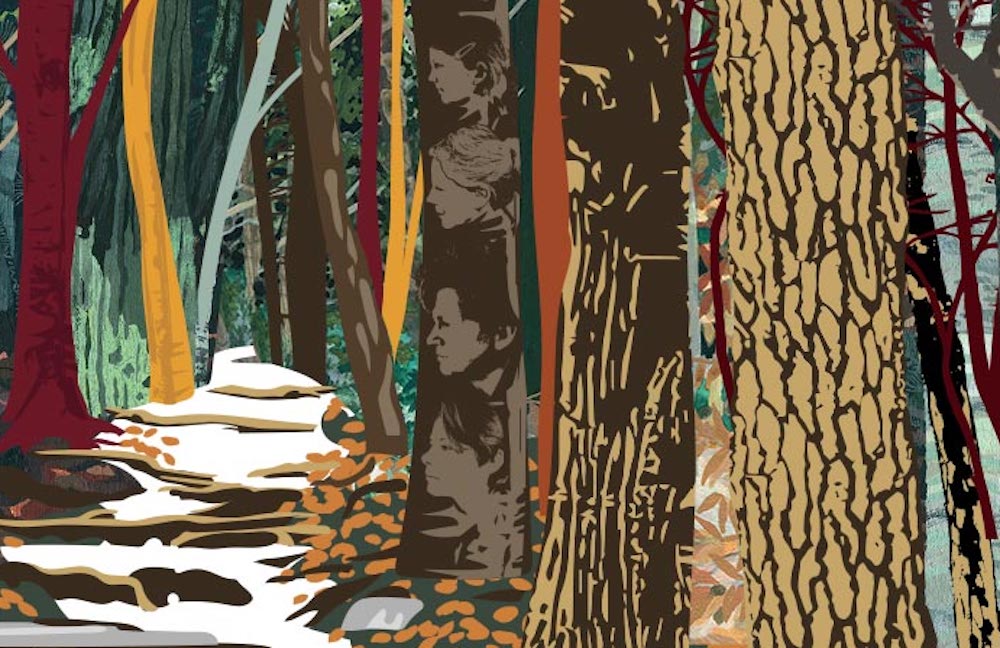
As you can see in the detail of the label, hidden in the trees, there are four distinct figures. Beyers wanted to honour her family so asked the artist, Rohan Etsebeth, to include likenesses of her husband, two children and herself subtly imbedded in the artwork. The art as a whole is Etsebeth’s own interpretation of pictures Beyers sent to him over a season of walking a section of the Bruce Trail in Hamilton, off the Chedoke Radial Trail and Iroquois Heights Conservation Area. Etsebeth is a sub consultant on branding for Resolute Wine Works.
Quote from the winemaker
“The Long Way Home is a lifelong aspiration, a culmination of everything learned and years of experience making wines from unique and off the beaten path vineyards all over the world. It tells the story of leaving behind the known and putting down new roots. It is also a story of coming full circle, of strengthening old bonds and new friends who became close friends and making this wine come to life.”
Our impression
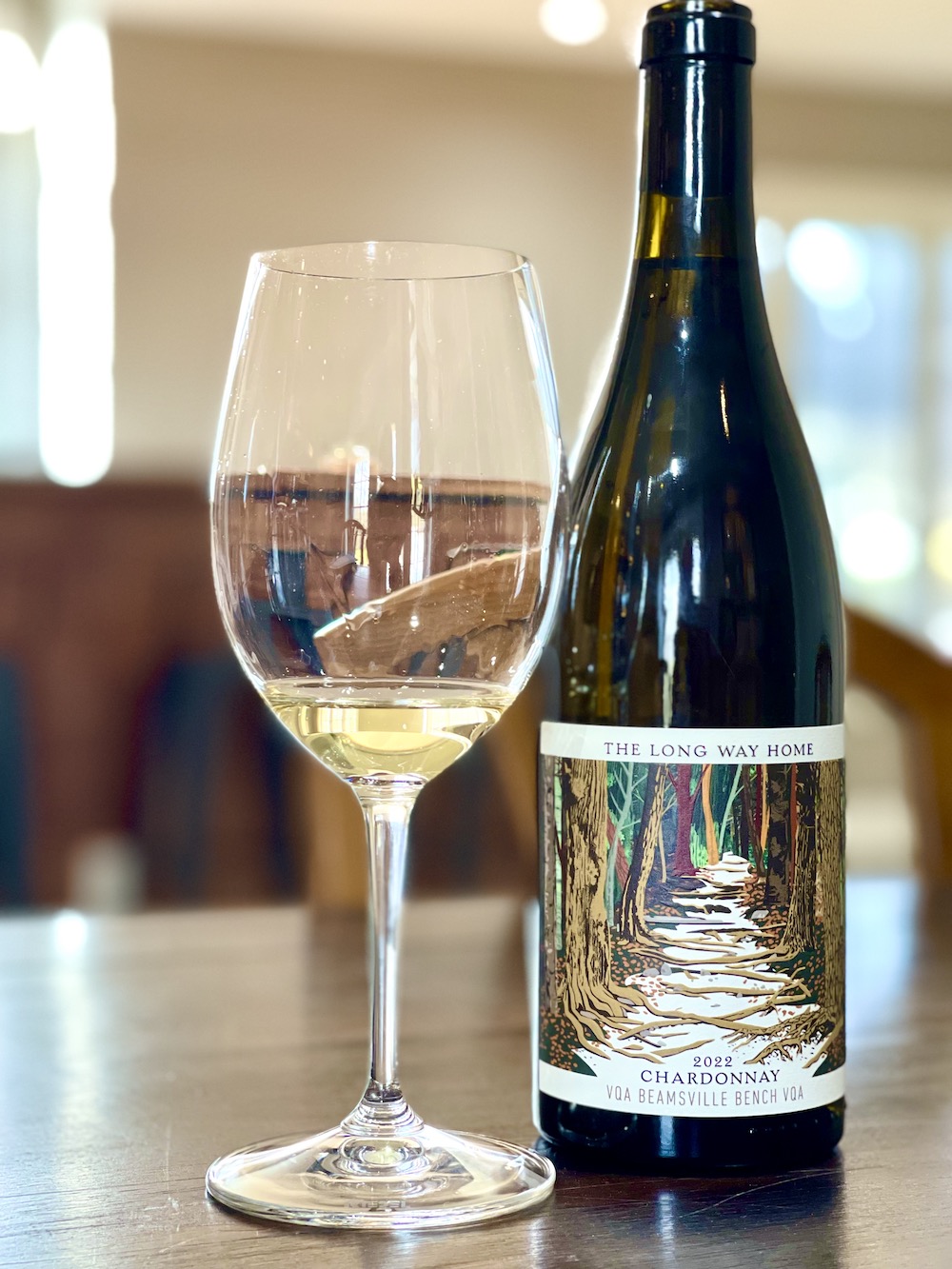
The Long Way Home Chardonnay 2022 ($48, 94 points) — It’s fresh, floral, and awash in salinity on the nose with perfumed pear, bergamot, lemon zest, yellow apple, stony minerality and elegant, integrated oak spice. Such a gorgeous creamy texture on the palate and a freshness that defines Beamsville Bench. The stony/flinty notes are followed by notes of rich pear, yellow apple, nectarine, subtle spice, and layers of citrus zest that contribute to the tight-rope tension, energy, and persistence of this beautiful expression of Chardonnay. The finish is long and finessed from the tingly acidity. You can cellar this for further development for 5+ years.
Welcome home, Marlize Beyers.
A selection of new Niagara wines reviewed
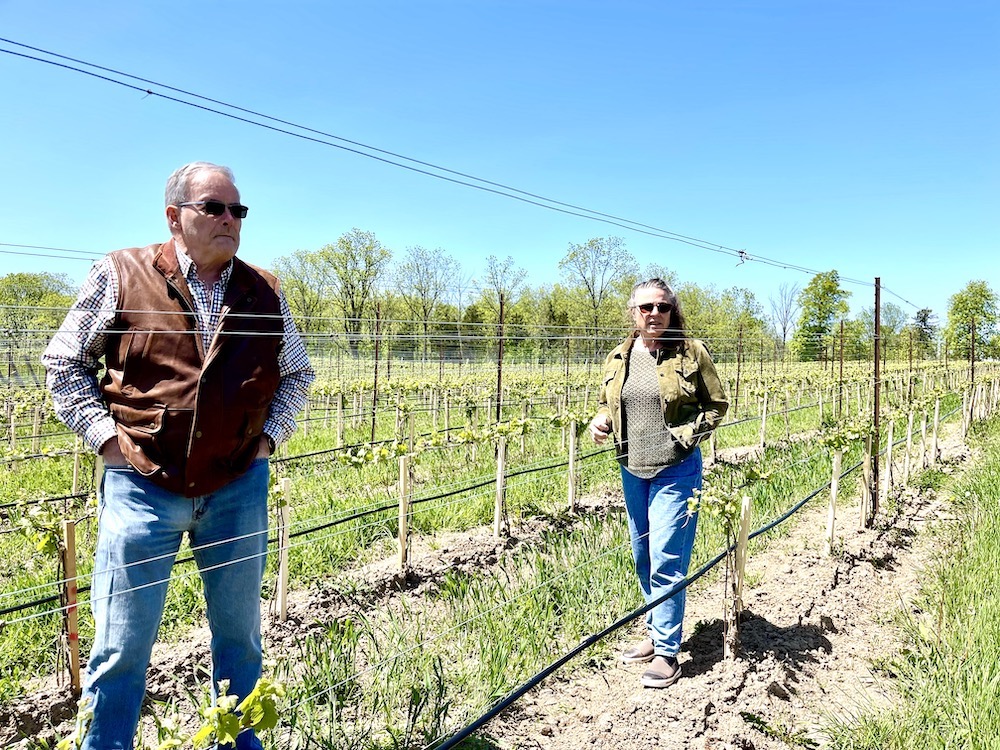
I sat around my dining room table with winemaker/consultant Peter Gamble recently to taste some of his newest wines while trying to solve many of the issues currently facing Ontario wineries. As you well know, Gamble and his wife Ann Sperling (above), both photographed at Dobbin Estate above, are involved in several relatively new wine projects in Niagara and more established projects in Nova Scotia as well as their own estate winery in Argentina called Versado, which specializes in Malbec from their historic planting in Mendoza.
Gamble brought an interesting, just released Cabernet blend from the micro, boutique winery Dobbin Estate, and I had a couple of wines from Stonebridge Vineyard (part of the Lailey family) to taste with him. He and Sperling are involved with both projects.
Gamble has a deep and invested knowledge of Canadian wines. He was the founding director of the Vintners Quality Alliance (VQA), which was established in 1988 to help lift Ontario wines from its “Baby Duck” reputation and drag “Ontario Wines Come In From the Cold,” as the Wine Spectator declared in a headline during that time (maybe the first time Ontario was ever mentioned in the legacy wine magazine).
Since departing VQA in 2000, Gamble’s consulting business has been dedicated to prestige winery start-ups, providing expertise in a range of areas from viticulture and winemaking through business plans and marketing. Projects have included Stratus and Ravine wineries in Niagara, as well as Benjamin Bridge and Lightfoot & Wolfville in Nova Scotia, and a string of wineries throughout Ontario.
All four of the wines released below, are from projects Gamble and Sperling are still intimately involved with.
Here’s what I liked:
Two reds from Stonebridge
Stonebridge is a separate label that comes under the umbrella of Lailey, both owned by Faik Turkmen. The Stonebridge vineyard is in the Four Mile Creek sub-appellation.
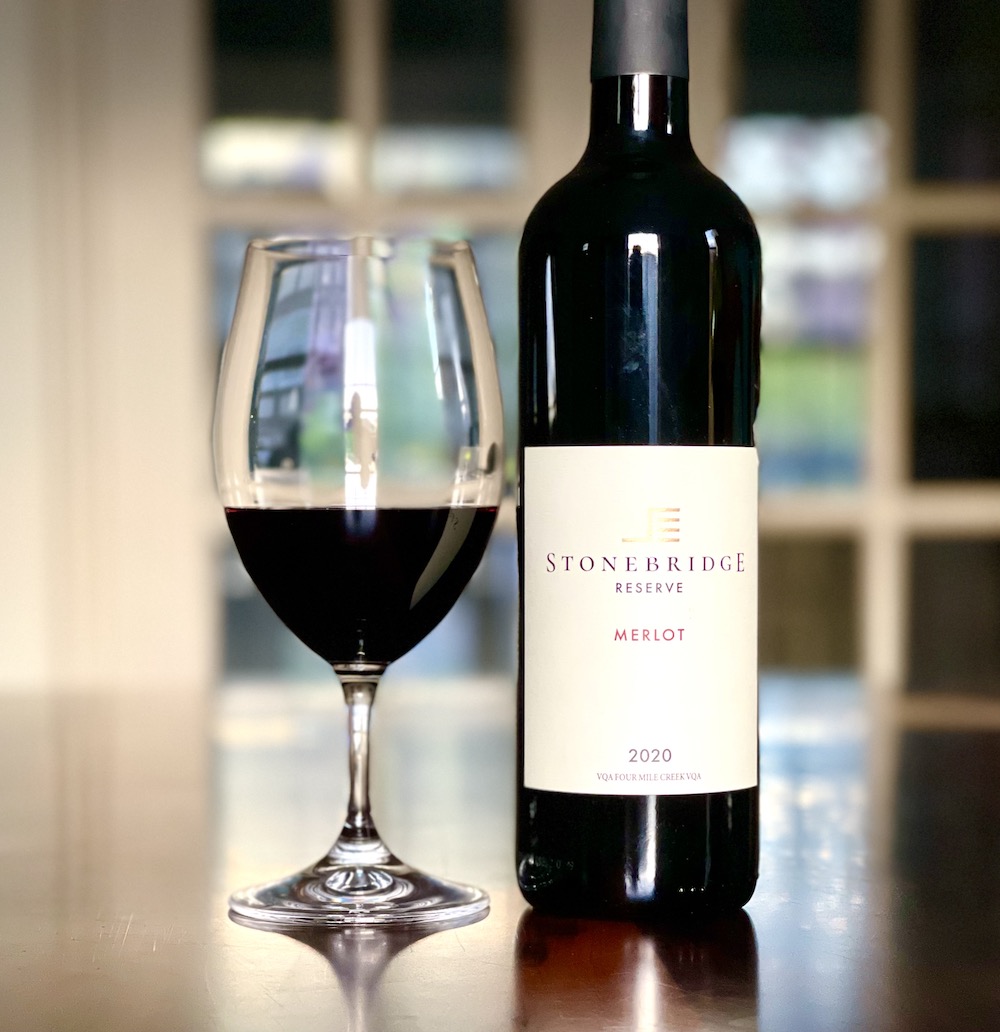
Stonebridge Reserve Merlot 2020 ($78, 93 points) — The grapes were fermented in micro-cuvees with manual punch-downs, including barrel fermentation with wild yeast, followed by ageing for 22 months in French oak barrels (30% new) and 500 litre puncheons. Interestingly, the grapes for the reserve Merlot were harvested from the same vineyard that was adjacent to the fascinating “unicorn” reserve Sauvignon Blanc written about here on Wines in Niagara. Gamble found this almost abandoned Merlot vineyard on the same day he discovered the botrytis affected Sauvignon Blanc. It’s the epitome of power and grace with an attractive nose of rich dark cherries, wild raspberries, blueberry pie, cocoa, chalky/smoky notes, and elegant oak spices. It’s quite dense and complex on the palate with savoury red berries, aniseed, black currants, earthy/brambly undertones, firm, but plush, tannic structure, toasty vanilla, and spice with a long, lifted finish. This will offer further rewards with 7+ years in the cellar.
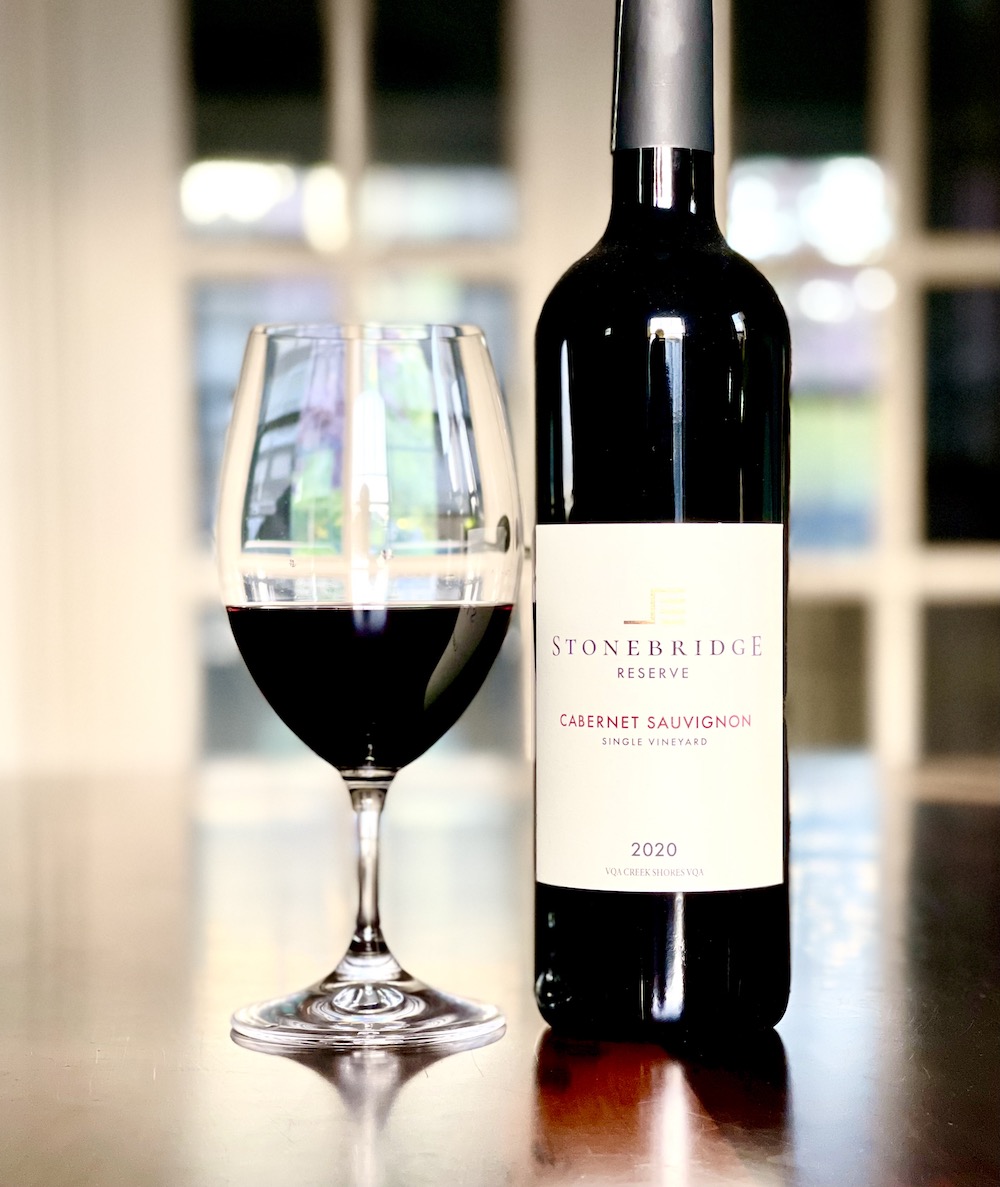
Stonebridge Reserve Cabernet Sauvignon 2020 ($87, released at Lailey Dec. 1, 94 points) — The grapes for this single vineyard wine come from the Creek Shores sub-appellation. It was wild fermented in micro cuvees with manual punch downs, followed by ageing for 22 months in French oak barrels (40% new) and 500 litre puncheons. Cabernet Sauvignon is enjoying a bit of a renaissance in Niagara, especially at a level such as this reserve, thanks entirely to new attention on detail and, of course, the 2020 vintage lent itself to full phenolic ripeness. Such an attractive nose of wild red berries, jammy blackberries, cassis perfume, some smoky/cedar notes, cocoa, and integrated fine oak spices. It’s highly structured, rich, and ripe on the palate with fine-grained tannins, or what Gamble likes to call “furry” tannins, with savoury red berries, cassis, black currants, dark chocolate, earthy notes, elegant spices, and length on a finessed finish. Can cellar this beauty 10+ years.
New 2020 red blend from Dobbin
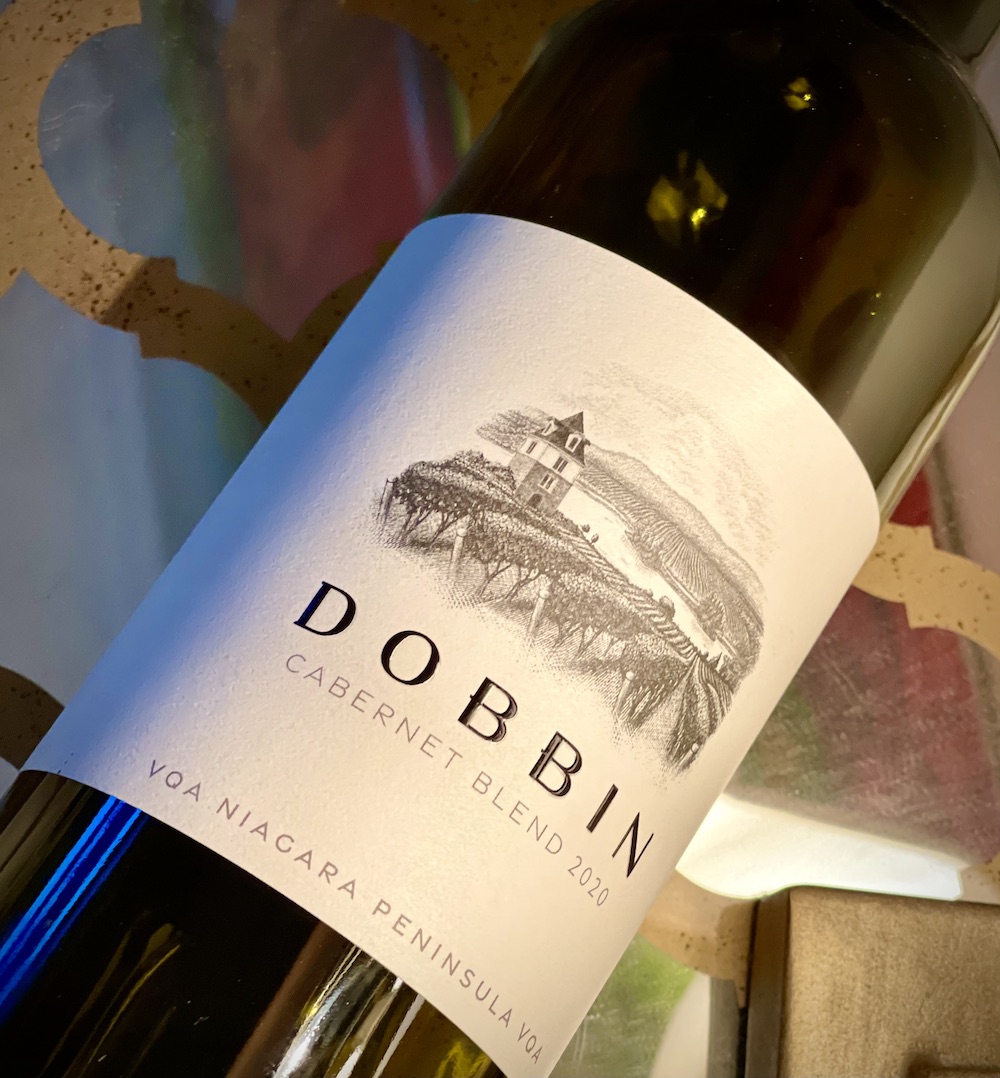
Dobbin Estate Cabernet Blend 2020 ($80, available here starting this week, 94 points) — Dobbin, located on the Twenty Mile Bench, benefits from calcium-rich soils that are ideal for producing Chardonnay, Pinot Noir, Riesling and Cabernet Franc. The estate vines were selected specifically to maximize the site and are tightly planted, grown organically, and cropped for low yields. Winemaking, consultation for the project and viticulture has been carried out by Gamble and Sperling since the inception of the project. This is the first wine from the 2020 vintage released at the estate. The blend is 85% Cabernet Franc and 15% Merlot sourced from three sub-appellations — Creek Shores, Four Mile Creek, and the Twenty Mile Bench. The grapes were hand harvested, wild fermented and aged for 20 months in French oak barriques (Vosages and Alliers), 55% new wood. Only 317 cases are available. This is something else, wow, such an impressive nose of savoury red berries, anise, cassis, subtle herbs, cocoa, charred cedar plank, persistence, and energy with fine and integrated oak spice notes. It’s like silk on the palate with ripe tannins, freshness, and delicacy, combining both power and grace. It’s red-fruited with added plum, cassis and aniseed accents, subtle minty/eucalypt notes and complementing spices delivered in layer after layer all leading to a fresh, vibrant, and long finish. Really fine blend that has the stuffing to age beautifully for 10+ years.
Bubbles from Lailey
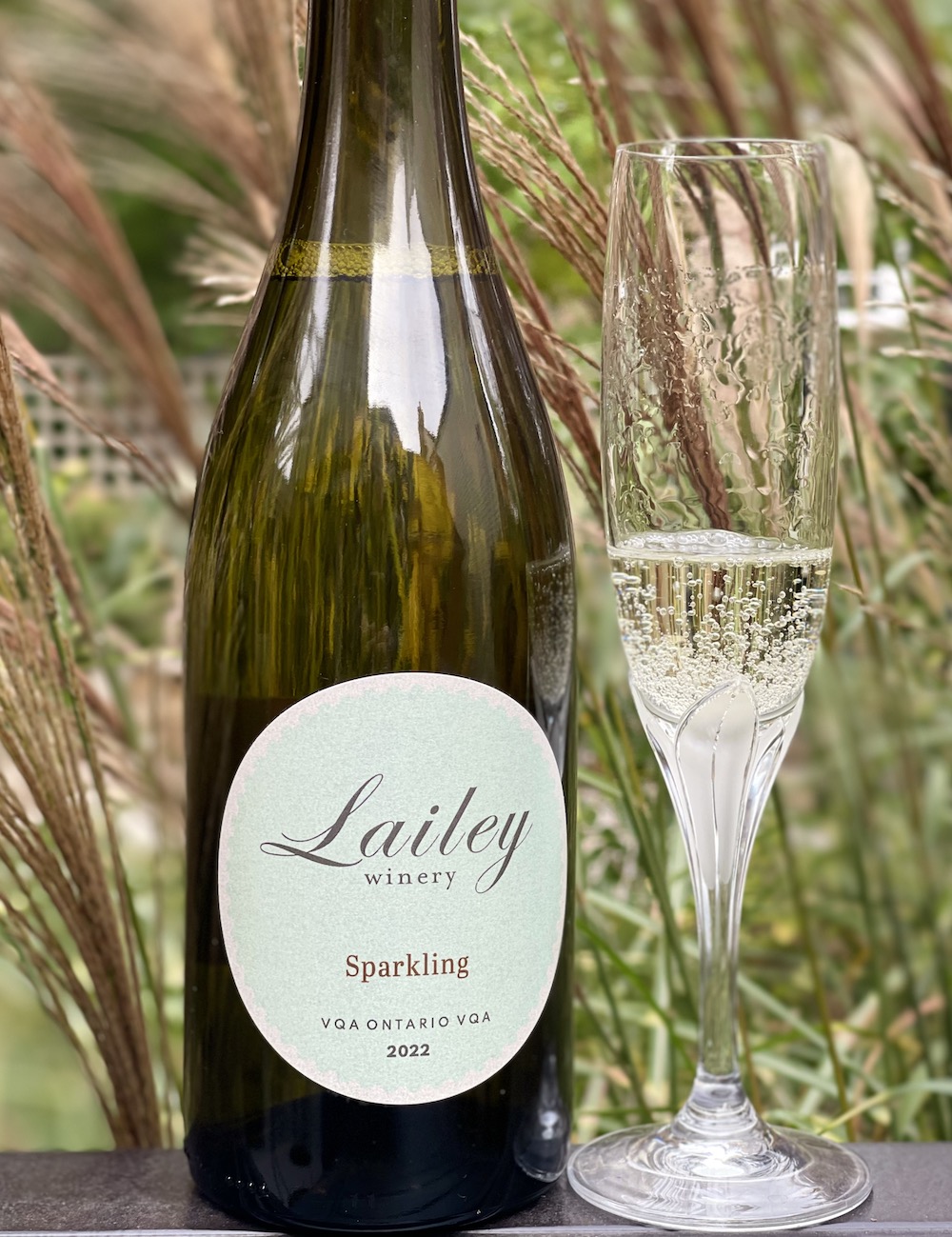
Lailey Sparkling 2022 ($28, 89 points) — The Lailey sparkling wine is made from 100% Vidal, the very last of the original vines that the Lailey family planted at the estate at the behest of Karl Kaiser and Inniskillin. A small dosage of Vidal icewine was included before bottling, with the RS at 18 g/L. The nose shows peach, fresh lemon slices, melba toast and green apple with a brisk, sustained bead in the glass. The palate reveals toasty/creamy notes, rounded, subtly sweet notes of peach, apple and citrus with a gentle bubble and a clean, fresh finish. A nice, easy-drinking sparkling wine.







Comment here